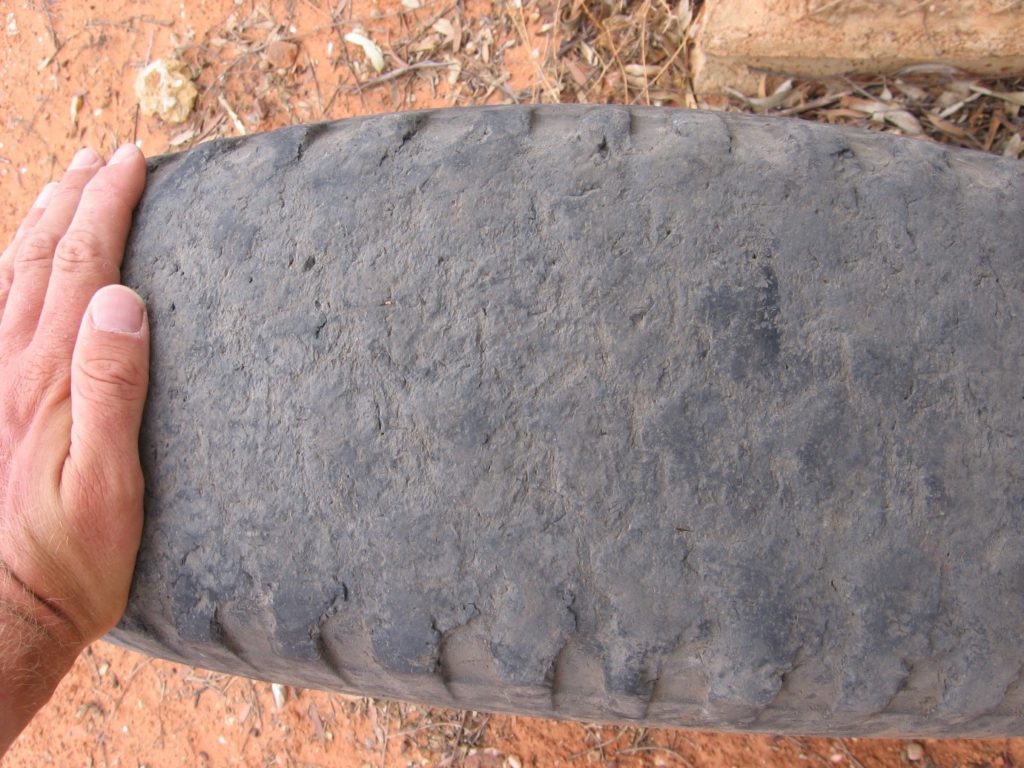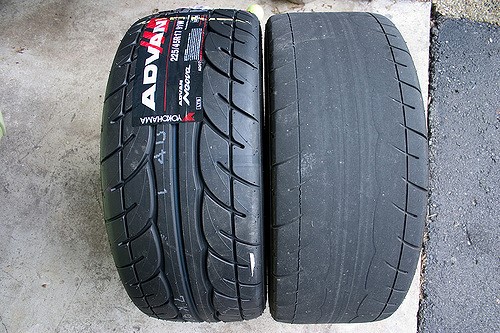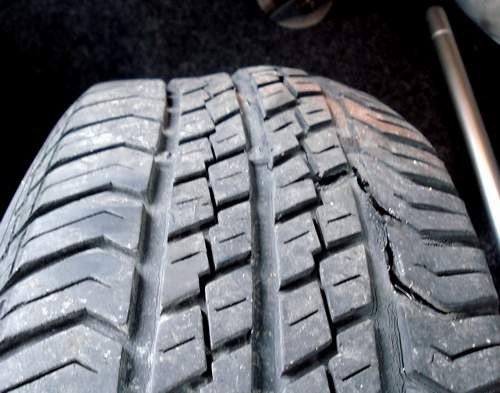The state of your tyres is a matter of life and death. Keep your tyres in good condition and you can depend on them. But if you let your tyres degrade, or if you use tyres that aren’t fit for purpose, you’re looking at less traction, increased stopping distances, and a greater risk of aquaplaning, blowouts, and other life-threatening events.
We put together an essential guide to tyre safety. It features information on the legal tyre tread depth, advice on how to check the state of your tyres, and a primer on how often you should change your tyres. Find it here.
But if you’re a new or a young driver, you might never have seen an unsafe or illegal tyre, so you might not know what to look for when checking your tyres. So we put together this gallery of some common tyre safety issues, to help you better understand the importance of keeping your tyres in good condition.
Examples of Illegal Tyres
A tyre with significantly worn treads is known as a bald tyre. Here’s a particularly bad example:

And here’s a side-by-side comparison with a tyre in better condition:

The tyre on the left is going to offer good grip and reliable stopping distances. The tyre on the right is a liability. Drive on this and you’ll skid, you’ll slide, and you’ll take forever to brake. This is why it’s important to keep on top of your tyre tread depth, and to change your tyres as soon as possible when it becomes necessary.
Another issue to look out for is tyre bulge. It looks like this:

A tyre bulge can be caused by a number of things, including driving over a pothole, driving too fast over a speed bump, and mounting a kerb too quickly. If a bulge appears, it means the tyre’s sidewall material has been weakened. Leave this untreated and you could get a blowout. Your tyre could essentially explode while you’re driving, which will cause you to lose control of your car.
Check your tyres regularly, and if you find a bulge, get that tyre changed immediately. Remember that bulges can form on either side of the tyre, so don’t just check the outer edge.
Also be on the lookout for cracks and tears:

This is an especially bad example, but any cracks, tears or other forms of damage will affect your traction and stopping distances while making blowouts more likely.
Other Tyre Safety Issues
Make sure you’re driving with the right tyres for your car. Read our guide to buying the right tyres here.
If you live in a cold climate, you might want to switch to winter tyres during the colder months. While winter tyres offer superior grip on icy surfaces, they’re not so effective in warmer weather. So if you use winter tyres, make sure you switch back to ordinary tyres once spring arrives.
If you need to change your tyre while on the road, remember that the spare tyre in your car is not intended to be a permanent replacement. It’s really only designed to get you to the nearest garage, where you can get a proper replacement tyre fitted. So don’t drive on it for more than 70 miles, and don’t exceed 50 miles an hour.
Don’t Let Your Tyres Get This Bad!
If your tyres get as bad as the images in this post, it’s already too late. You’re an accident waiting to happen, and if you’re caught driving with unsafe tyres, you could receive three penalty points and a fine of £2,500 per tyre.
If you’re involved in a collision while driving with unsafe tyres, it could invalidate your car insurance claim.
Don’t risk the hefty fines and potential accidents. Keep your tyres in good condition. It could save you money, and it could even save your life.



